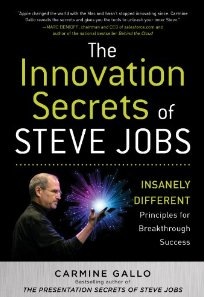Book Review: The Innovation Secrets of Steve Jobs
 Monday, October 25, 2010 at 10:02AM
Monday, October 25, 2010 at 10:02AM If you are looking at the title of this week's book review, and thinking it sounds vaguely familiar, well we previosly reviewed The Presentation Secrets of Steve Jobs, by the same author, Carmine Gallo.
 When this book arrived, I was concerned that Gallo was trying to stretch the premise of Jobs-based books thin by going to the same well again. However, that is definitely not the case. Where the first title felt a little thin, relying frequently on Jobs' slides for filler, The Innovation Secrets of Steve Jobs is packed full of useful insight into Steve Jobs' thinking. For those of us who closely follow Apple, this title offers up some lesser-known stories from the Apple boardroom.
When this book arrived, I was concerned that Gallo was trying to stretch the premise of Jobs-based books thin by going to the same well again. However, that is definitely not the case. Where the first title felt a little thin, relying frequently on Jobs' slides for filler, The Innovation Secrets of Steve Jobs is packed full of useful insight into Steve Jobs' thinking. For those of us who closely follow Apple, this title offers up some lesser-known stories from the Apple boardroom.
As an even greater surprise, the stories of several innovators big and small are used to highlight how Apple's methods can, and are used by others. Examples range from the guys behind the Flip video camera, to the creators of Zappos.com.
More than just an interesting read, the book can leave you fired up, as rather than putting Jobs on a pedestal, Gallo sensibly and with very little idol worship, shows how the same ideas can be applied to other industries, startups, and even your personal life.
A fast-paced, useful, and inspiring read, Gallo brings Jobs' skills down to earth for any of us to put into practice.



























